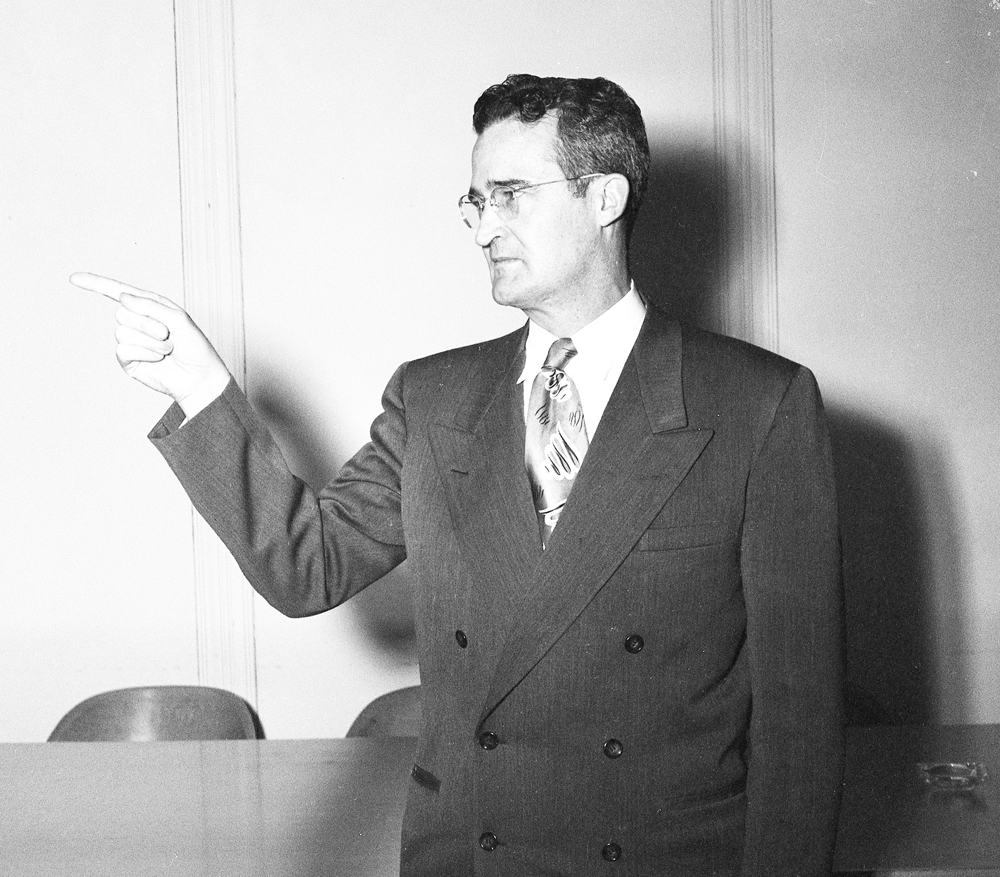Anyone who has ever had to run from Lincoln Hall to the University Technology Services building in the 10 minutes allotted between classes will assure you, once they’ve caught their breath, that Portland State has a massive, sprawling campus.
It wasn’t always this way, though. At one point PSU was a much smaller institution, focusing mostly on night classes. Prior to 1955, the university didn’t even offer four-year degrees.
The shift from a two-year school to a four-year college was a dramatic one, fraught with political battles and staunch opposition. Though PSU would inevitably prevail, it wasn’t an easy road.
The roof above your head
PSU, known as the Vanport Extension Center from 1946 to 1952, had a rough start. In those first years the school survived a flood, budget crises and the myriad complications that must have arisen from running a school out of a formership building warehouse.
As a result of such continuous setbacks, the center moved around frequently. Eventually it found its permanent home in downtown Portland in 1952 when it moved into the old Lincoln High School (now Lincoln Hall) and became the Portland Extension Center.
Stephen E. Epler, who had originally conceived of the center as a way to satisfy the educational needs of returning World War II veterans, found a concrete location for the center and fixed his gaze on bringing a four-year program to the school.
Boomtown
At the time, the country was grappling with the realities of the Baby Boom. The sudden influx of returning veterans had, in turn, triggered a sudden influx in children. These children were reaching school age and educators were in high demand. Portland, with its veteran population hungry and able to pay for a college education, must have seemed ripe for a teachers program.
In 1952 the State Board of Higher Education hired a consultant, Earl W. Anderson, who was a professor of education at Ohio State University, to provide recommendations on how to address the lack of available teacher education programs.
Anderson recommended precisely what Epler and his allies were after: the funding of a four-year undergraduate program designed to create more teachers. Epler and his allies, who had lacked an argument convincing enough to bring a four-year program to the Extension Center, seized on the demand and proposed just such a program to the board.
The proposal was not without opposition, but the main source of the opposition might come as a surprise: a university. The University of Oregon, to be precise.
Go (away) Ducks
According to The College that Would not Die by Gordon Dodds, UO was vehemently against the inclusion of a four-year undergraduate program at the center because it feared the appropriation of its own funding.
“President Newburn of the U of O maintained making Portland State a four-year school would dilute resources and thus standards,” Dodds wrote. “He said no other state supports three institutions of higher learning and recommended a study be made of the state’s educational needs for the next 25 or 30 years.”
Many of Newburn’s concerns were rightly seen as delay tactics by his opposition, but they held water on numerous occasions. In this way he was able to keep the board from approving Anderson’s recommendations.
To complicate matters further, there were laws prohibiting a state university from being founded anywhere but Marion County, which is home to the state capitol, without the vote of the people. Portland, located in Multnomah County, was fresh out of luck.
In 1953 the likelihood of having a four-year program approved at the center was looking grim, but 1954 would prove to be a different story altogether. That was the year all of the pieces came together, seemingly all at once.
A four-year school in Portland
The first major change in 1954 was the departure of Newburn from UO. According to Dodds, Newburn’s replacement O. Meredith Wilson was “not the strong opponent of Portland State his predecessor…had been.” After Newburn’s departure, the state board also became more amenable to the idea of a four-year program in Portland.
UO had also proposed a dental school in the Portland area, which directly conflicted with the Marion County law. The dental school set a precedent for state-funded schools outside of Marion County and cleared the way for the center’s allies.
The center quickly received approval for a teachers program and, without skipping a beat, set their aims on becoming a full four-year college. Their efforts were rewarded when, on Feb. 10, 1955, Governor Paul Patterson signed the bill that would allow the Portland Extension Center to distribute four-year degrees, and thus, become Portland State College.







